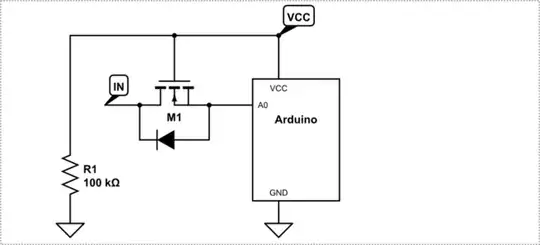I am using a Arduino Pro Micro from SparkFun (similar to Arduino Leonardo, cpu: Atmega 32u4). It has a analog input: A0, which I use to keep track of the battery voltage in my battery powered project (via analogRead).
I found out that the red LED on the board lights up, even if there is no supply voltage on the usual inputs (micro-USB or Vcc). If I use a multimeter to measure the current between the battery and A0, I see that the analog input is drawing about 30mA if the Arduino is not powered.
Is this the normal behaviour? Can I fix this via hardware?

